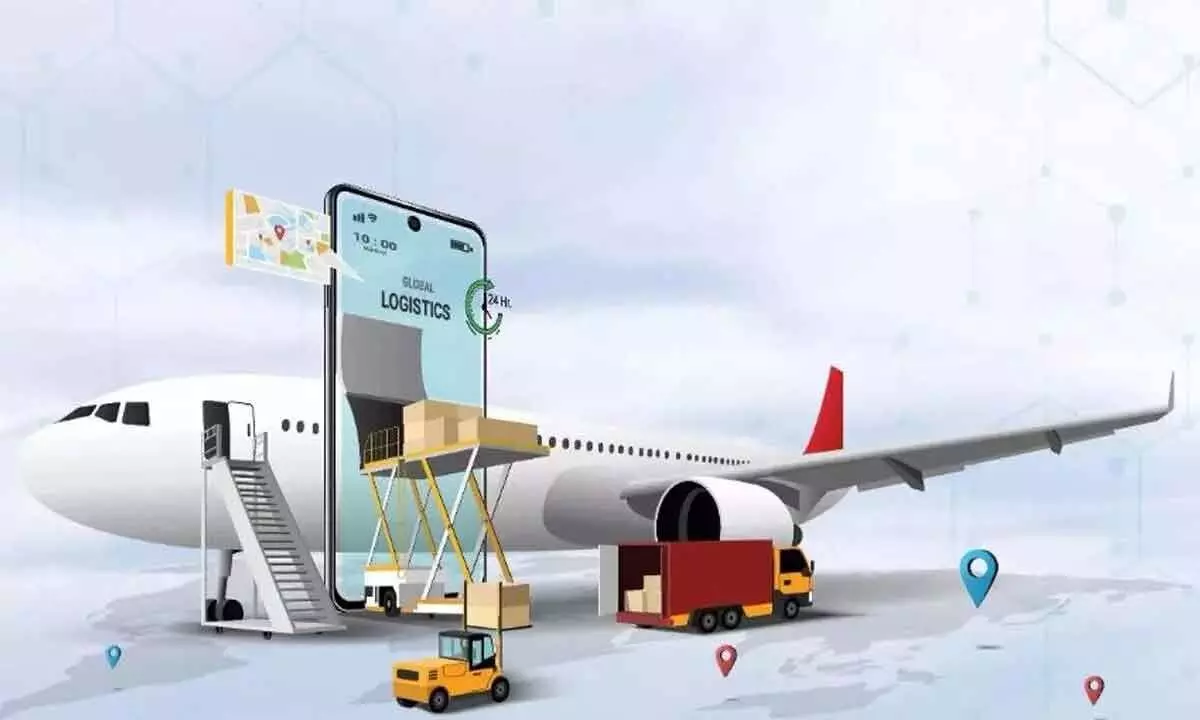Optimising global aviation logistics is paramount

Air transportation provides critical capabilities for a modern economy. Whether it involves passengers or cargo, the ability to quickly and reliably move valuable resources over great distances improves the quality of life and standard of living of people across the globe
Global air cargo tonnages showed a positive development in the second full week of September, up on the previous week after stabilising at the beginning of the month, according to the latest figures from WorldACD Market Data.
Comparing the overall global market with the corresponding period of last year, WorldACD noted that chargeable weight in weeks 36 and 37 was down 2%, compared with the equivalent period last year, although global weakness was partially offset by a 10% rise ex-Asia Pacific.
Worldwide average rates are currently 33% below their levels this time last year, at an average of $2.31 per kilo in week 37, although they remain significantly above pre-Covid levels (+34% compared to September 2019).
Air transportation provides critical capabilities for a modern economy. Whether it involves passengers or cargo, the ability to quickly and reliably move valuable resources over great distances improves the quality of life and standard of living of people across the globe. While you may be more familiar with the term “aviation” than “logistics” you observe logistics in action any time you travel or purchase a product.
Aviation MRO logistics market size was valued at $ 2.3 billion in 2022 and is projected to reach $ 10.7 billion by 2032, at a CAGR of 18.60% during the forecast period (2023 - 2032).
Civil aviation, one of the segments analysed in the report, is projected to grow at a 4.5% CAGR to reach $ 7.8 billion by 2026. After a thorough analysis of the business implications of the pandemic and its induced economic crisis, growth in military aviation segment is readjusted to a revised 3.6% CAGR by 2026. This segment currently accounts for a 29.5% share of the global aviation MRO logistics market.
In the global business aviation segment, USA, Canada, Japan, China and Europe will drive the 3.5% CAGR estimated for this segment.
These regional markets accounting for a combined market size of $744.9 million in the year 2020 will reach a projected size of $949.7 million by 2026.
Aerospace industry supply chains are increasingly governed by stricter safety regulations, just-in-time processes and reduced repair cycles and after-sales performance commitments. The value and extremely precise purpose of certain parts, the multitude of destinations, the globalisation of procurement and maintenance and heightened pressure to optimize costs mean aerospace industry supply chains are increasingly governed by just-in-time processes and after-sales performance commitments.
North America (United States, Canada and Mexico), Europe (Germany, UK, France, Italy, Russia and Turkey etc.), Asia-Pacific (China, Japan, Korea, India, Australia, Indonesia, Thailand, Philippines, Malaysia and Vietnam) and South America (Brazil, Argentina and Columbia) and Middle East and Africa (Saudi Arabia, UAE, Egypt, Nigeria and South Africa) are the leading regions in the MRO aviation industry market.
Data and technology can help you monitor, measure, and improve your transportation performance and efficiency. You can use data to track transportation activities, such as costs, time, quality, and customer satisfaction. You can also use data to forecast your transportation demand and supply, such as seasonal variations, trends, and disruptions. Technology can help you automate and optimise your transportation processes, such as routing, scheduling, dispatching, and invoicing. Technology can also help to communicate and collaborate with your transportation partners, such as suppliers, carriers and customers.
India’s growing focus on aerospace manufacturing had opened opportunities for international companies to establish strategic partnerships with manufacturers, which it believes will propel a greater flow of aircraft component imports.
The major Indian import destinations for AOG shipments are Delhi and Mumbai, with sporadic movements into Chennai and Bangalore.
Apart from typical challenges tied to swift and efficient delivery of spares, AOG forwarders must comply with cumbersome regulatory requirements.
Air Works Group and GMR Group have maintenance facilities for Airbus and Boeing aircraft in Hyderabad.
Meanwhile, in 2023, Boeing invested $24 million in a new logistics centre in India to cater to its regional customers that support an efficient and cost-effective service solution for regional customers to maintain higher fleet utilization and mission readiness rates.
The demand for air freight capacity out of India is on the up, driving an influx of cargo-only start-ups that have begun a raft of chartered routes with modified planes.
Buoyed by strong growth signals, New Delhi is working on plans to set up some 100 new airports by 2024, which are expected to create further investment opportunities for the global players.














